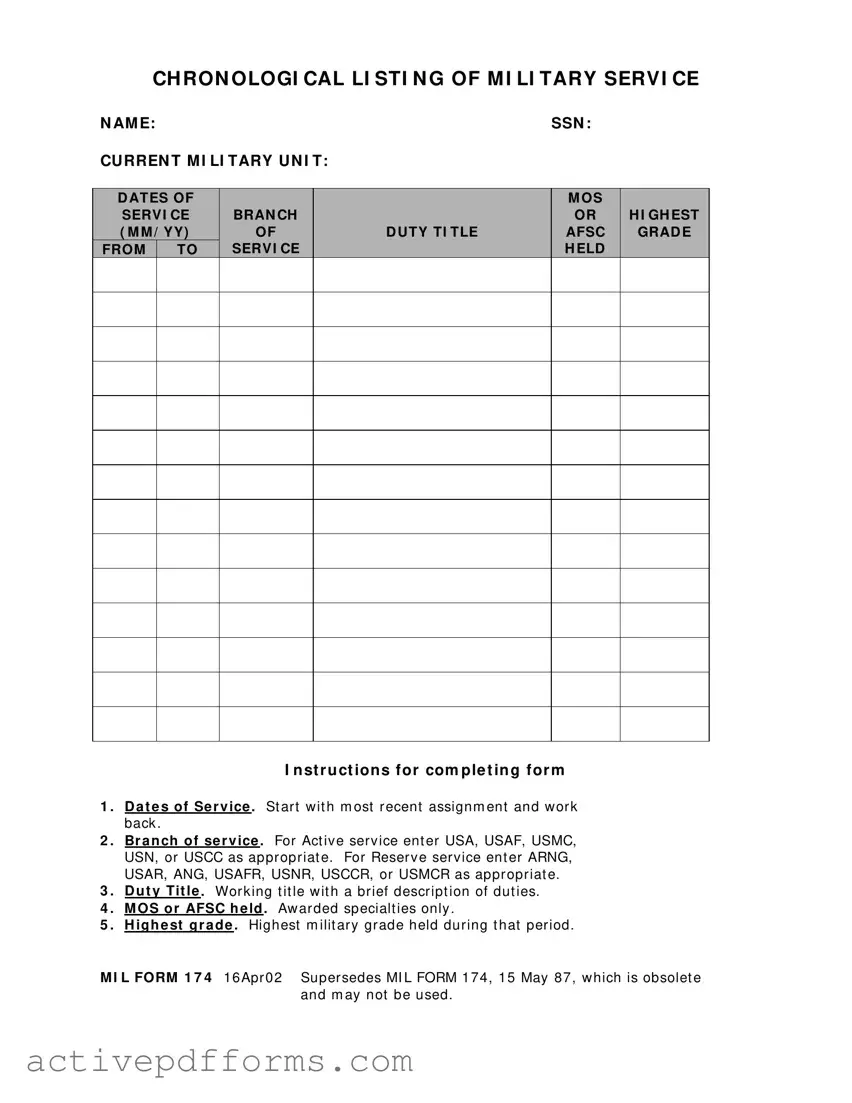For individuals who have dedicated a portion of their lives to military service, accurately documenting their service history is of paramount importance, not only for benefits and recognition but also for historical and personal record-keeping purposes. The MIL Form 174 plays a critical role in this process. It is a comprehensive document that serves as a chronological listing of an individual's military service details. This form captures key information such as the service member's name, Social Security Number (SSN), current military unit, dates of service, branch of service, duty titles, Military Occupational Specialties (MOS) or Air Force Specialty Codes (AFSC) held, and the highest grade achieved. Instructions for completing the form emphasize starting with the most recent assignment and working backward, highlighting the depth of information required. Specifically designed to encompass both active and reserve services across various branches, the MIL Form 174 requires precise inputs, including branch codes for different types of service, ensuring a detailed military service profile is created. This careful documentation aids in the accurate reflection of a service member's career, providing a clear and structured overview of their professional military journey, which is essential for veteran's benefits, career planning, and historical records.


 FROM
FROM  TO
TO